Zadar is the most northern tip of Dalmatia, the gateway for people coming from the North to visit this part of the country. It is full of contrasts, rich historical heritage and breathtaking scenery.
The first and perhaps the most intense experience in this area are the colours.
The harmonious blue colour of the water that goes into the green of the pine forests and olive groves that together with the white colour of the rock form the Dalmatian coastline. The old town of Zadar is 3000 years old and the most studied city where Roman history is concerned at the Croatian side of the Mediterranean.
The Romanesque churches of St. Donatius, St. Anastasia, St. Chrisogenus and, near Zadar, the town of Nin (the oldest royal place) with the smallest cathedral in the world, 36 places, are all worthwhile visiting. A visit to the Zadar region will tell you more about the history of Croatia than a book would
Losinj
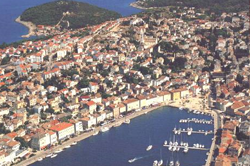 This island with 300 days of sunshine a year you should not miss. It has a beautiful bay. Entirely land-locked and accessible only through a narrow passage. 2 cities dominate the island, Mali Losjinj and Veli Losjinj , which means small and large Losjinj. This is a contradiction because the opposite is true. Mali is larger in size than Veli. Mali Losjinj has numerous bars and restaurants that surround the port while Veli Losjinj is much more rural and more picturesque with the prominent St. Anthony’s Church Centre.
This island with 300 days of sunshine a year you should not miss. It has a beautiful bay. Entirely land-locked and accessible only through a narrow passage. 2 cities dominate the island, Mali Losjinj and Veli Losjinj , which means small and large Losjinj. This is a contradiction because the opposite is true. Mali is larger in size than Veli. Mali Losjinj has numerous bars and restaurants that surround the port while Veli Losjinj is much more rural and more picturesque with the prominent St. Anthony’s Church Centre.
Cres
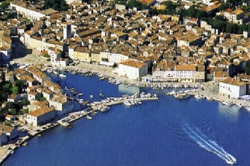 This is the second largest island of Croatia and is connected to Losjinj via a small bridge (11 meters). The main venue is also called Cres and is characterized by Italian influences. Cres has formed a part of Italy for nearly 800 years. Sights include the St. Jacobs Church dating from the 15th century and the places Beli, Martinščica and Valun.
This is the second largest island of Croatia and is connected to Losjinj via a small bridge (11 meters). The main venue is also called Cres and is characterized by Italian influences. Cres has formed a part of Italy for nearly 800 years. Sights include the St. Jacobs Church dating from the 15th century and the places Beli, Martinščica and Valun.
Krk
 Heeft tussen 1480 en 1797 deel uitgemaakt van het Venetiaanse rijk. Daarvoor was het in bezit van Kroatische graven.
Heeft tussen 1480 en 1797 deel uitgemaakt van het Venetiaanse rijk. Daarvoor was het in bezit van Kroatische graven.
Krk is niet alleen het grootste eiland maar heeft ook de meeste inwoners.
Het eiland is verbonden met het vaste land en wordt wel het groenste en mooiste eiland genoemd. Bekende plaatsen zijn: Baska, Malinska, Omisalj, Vrbnik, Punat en Krkstad.
Rab
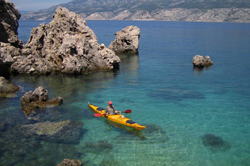 Is a very green magical island, covered with pine forests. Rab has beautiful beaches. Rab is known for its mild climate that is very different from the mainland. Three mountain ranges protect the island against the sometimes very strong winds (Bora) which blow from the Velebit mountains over the Adriatic Sea. This mountain was formerly filled with sustainable woods. This was all cut down to build the city of Venice. Rabstad is full of medieval buildings that were founded from the 13th century during the Venetian domination. The old city walls are still visible in several places.
Is a very green magical island, covered with pine forests. Rab has beautiful beaches. Rab is known for its mild climate that is very different from the mainland. Three mountain ranges protect the island against the sometimes very strong winds (Bora) which blow from the Velebit mountains over the Adriatic Sea. This mountain was formerly filled with sustainable woods. This was all cut down to build the city of Venice. Rabstad is full of medieval buildings that were founded from the 13th century during the Venetian domination. The old city walls are still visible in several places.
Pag
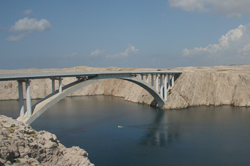
The second largest island in the Adriatic Sea. It is notable for its arid vegetation, but the numerous walls made by farmers and shepherds still make for a little cultivation. Despite this the island has the requisite charm. The two main places: Novalje and Pagstad. The last was designed by the great Renaissance builder Juraj Dalmatinac Novalj is trying to develop itself as the largest Croatian party city, with the ambition to overthrow Ibiza.
Silba
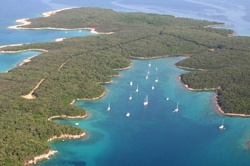 Originally a city of sailors. In the 18th century, Silba had up to a 100 ships. The permanent population consists of no more than 300 people. In the summer there are about 1700. Silba is an island without cars. Only commercial vehicles are allowed. The population mainly works in the tourist industry. The island has beautiful beaches. The “Toreta” a tower standing in the middle of the island with a spiral staircase offers a formidable view of the landscape.
Originally a city of sailors. In the 18th century, Silba had up to a 100 ships. The permanent population consists of no more than 300 people. In the summer there are about 1700. Silba is an island without cars. Only commercial vehicles are allowed. The population mainly works in the tourist industry. The island has beautiful beaches. The “Toreta” a tower standing in the middle of the island with a spiral staircase offers a formidable view of the landscape.
Molat
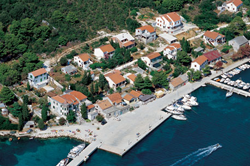 The bays and beaches of Molat invite you to a refreshing dip. Molat has a relatively young vegetation. The northeast side has several caves. The south west side is steeper and has a beautiful view over the sea. It is not too dense. Main source of income is fishing, farmers and tourism.
The bays and beaches of Molat invite you to a refreshing dip. Molat has a relatively young vegetation. The northeast side has several caves. The south west side is steeper and has a beautiful view over the sea. It is not too dense. Main source of income is fishing, farmers and tourism.
Andere bestemmingen: Split/Trogir
 Trogir, with its walled ramparts, is wonderful. Trogir is built within and around the Roman palace of Emperor Diocletian (330 BC). Much of the palace is still intact and is a unique example of Roman architecture. From here it’s a small step to Split. Split has the most colourful and largest food markets in Europe.
Trogir, with its walled ramparts, is wonderful. Trogir is built within and around the Roman palace of Emperor Diocletian (330 BC). Much of the palace is still intact and is a unique example of Roman architecture. From here it’s a small step to Split. Split has the most colourful and largest food markets in Europe.
Split beschikt over de kleurrijkste en grootse voedselmarkten van Europa.
Dubrovnik
 This city speaks for itself. It has a rich history and was bombed a lot during the last war but has since largely recovered.
This city speaks for itself. It has a rich history and was bombed a lot during the last war but has since largely recovered.
Korcula
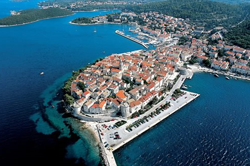 A completely walled city on a peninsula and known for its vineyards. Korcula was once a pirate stronghold. They earned a good living here on the Venetian merchant fleet. This came to an end when the city was conquered by the Venetians. The impact is still visible in the buildings.
A completely walled city on a peninsula and known for its vineyards. Korcula was once a pirate stronghold. They earned a good living here on the Venetian merchant fleet. This came to an end when the city was conquered by the Venetians. The impact is still visible in the buildings.
Hvar
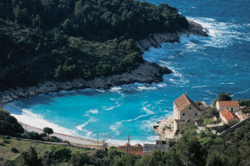 Formerly called the St. Tropez of the Eastern block. The historic and picturesque town center is car-free and surrounded by bars, cafes and restaurants. Here you can dance and party well into the night.
Formerly called the St. Tropez of the Eastern block. The historic and picturesque town center is car-free and surrounded by bars, cafes and restaurants. Here you can dance and party well into the night.
Bol
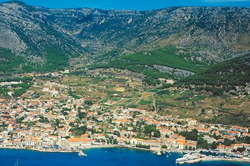 Known for its famous beach Zlatin Rad “(gold cape). The mostly small rocks change with the tide and provide a special effect on the crystal clear water.
Known for its famous beach Zlatin Rad “(gold cape). The mostly small rocks change with the tide and provide a special effect on the crystal clear water.
If you have any questions please contact us via email dracosailing@gmail.com or telephone 0031-623337206



